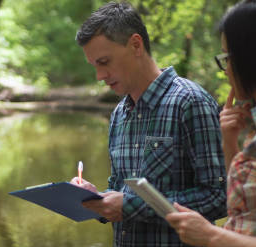Weather balloons may appear simple, but they serve critical roles in cutting-edge science and national infrastructure. These high-altitude instruments provide data for everything from daily forecasts to space missions, making them indispensable to meteorologists, researchers, and government agencies alike.
Primary Scientific Applications
-
Meteorology: Track and forecast weather systems by measuring temperature, humidity, and pressure at altitude.
-
Climate Research: Contribute long-term datasets used to monitor global warming and atmospheric changes.
-
Atmospheric Chemistry: Analyze pollutants, ozone concentrations, and greenhouse gases in different layers of the atmosphere.
-
Space & Astronomy: Carry instruments above the weather for near-space observations or pre-flight rocket testing.
-
Radio & Communication Testing: Used to test long-range transmission devices and satellite systems.
Global Use Cases by Organization Type
| Organization |
Purpose |
Example Use |
| National Weather Services |
Forecasting and aviation safety |
Daily balloon launches worldwide (e.g., NOAA, Met Office) |
| Universities & Research Labs |
Scientific studies and experiments |
Ozone layer measurements or turbulence studies |
| Space Agencies |
Launch simulations and sensor testing |
NASA testing high-altitude cameras or electronics |
| Military & Defense |
Operational weather intelligence |
Mission planning and high-altitude surveillance tests |
| STEM Education Programs |
Hands-on learning and science outreach |
Classroom-led balloon launches and data analysis |
Who Benefits From These Uses?
Weather balloons serve a broad community of users with diverse scientific goals:
-
Meteorologists: Gain real-time vertical weather data to improve local forecasts.
-
Climatologists: Analyze long-term data for patterns related to global climate change.
-
Space Engineers: Use balloons for testing instruments in near-space conditions.
-
Environmental Scientists: Study air quality, greenhouse gases, and volcanic emissions.
-
Educators & Students: Conduct real-world science experiments with accessible equipment.
Frequently Asked Questions (FAQs)
-
Are weather balloons still relevant with satellites?
- Yes. Satellites provide horizontal coverage, but balloons deliver more detailed vertical profiles.
-
Can balloons reach the stratosphere?
- Absolutely. Most reach 20–35 km in altitude, well into the stratosphere.
-
How often are balloons used for climate studies?
- They are integral to global climate monitoring networks like the Global Climate Observing System (GCOS).
-
Can amateurs contribute to scientific data?
- Yes. Data from citizen science launches can supplement official readings if well-documented and accurate.
-
What kind of instruments are used in pollution studies?
- Specialized sensors measure CO2, ozone, sulfur dioxide, and particulate matter.
Related Posts

Bob Batemen is a dedicated contributor to WeatherScientific.com, bringing a wealth of expertise in weather management and environmental science. Bob combines a deep understanding of environmental systems with practical experience in weather forecasting, climate patterns, and the implementation of sustainable weather-related solutions. Over the years, Bob has developed a keen interest in how climate change impacts global weather patterns, disaster risk management, and the mitigation of extreme weather events.
Bob's professional experience spans both private and public sectors, where they have contributed to the development of weather-sensitive infrastructure, environmental policy, and climate adaptation plans.
As a contributor to WeatherScientific.com, Bob shares insightful articles, guides, and analyses on emerging weather trends, cutting-edge weather technologies, and their environmental implications. Their passion for blending science with practical applications continues to shape their work, providing readers with valuable, informed perspectives on the ever-evolving world of weather and environmental management.




Leave a comment